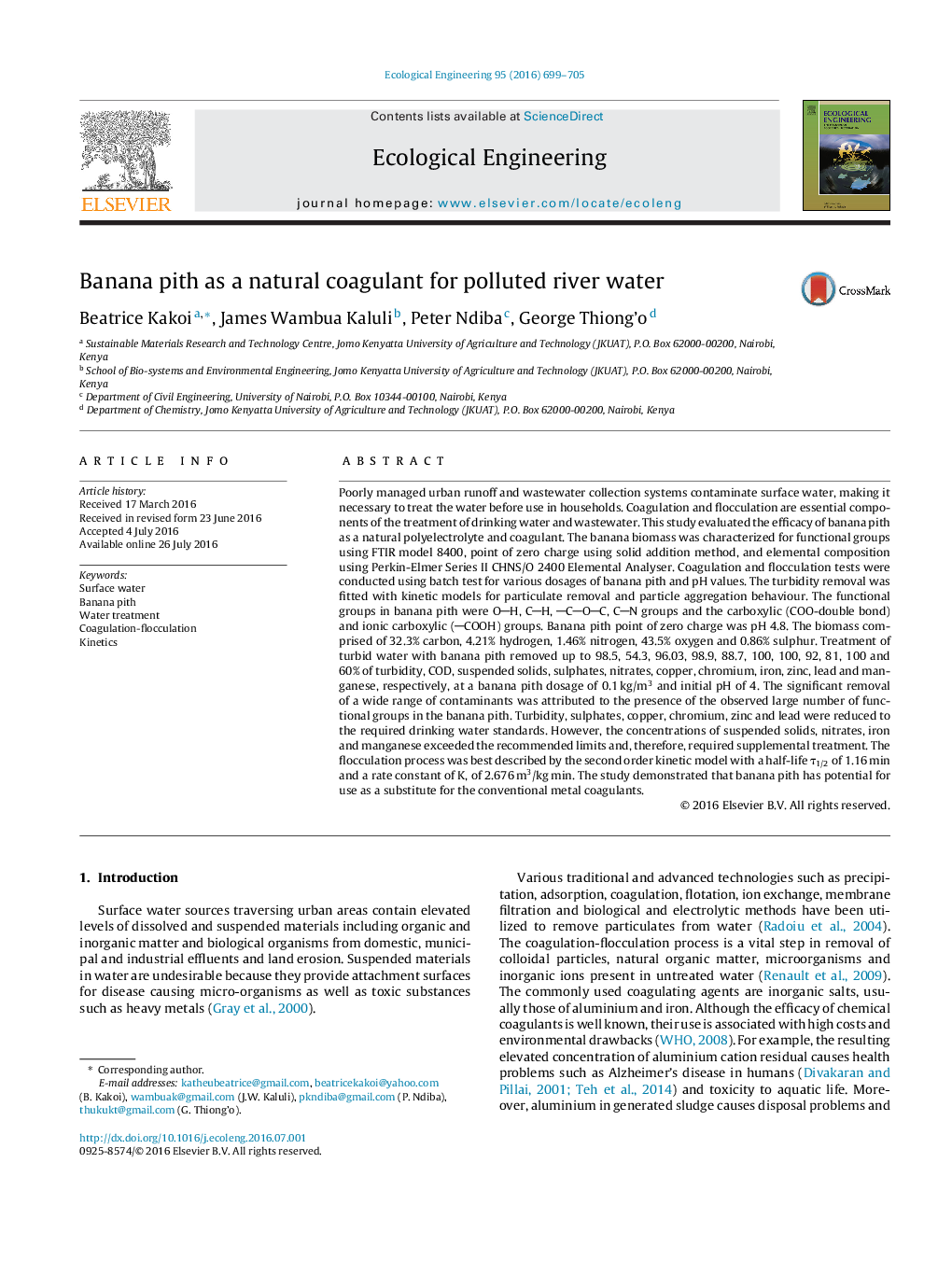| کد مقاله | کد نشریه | سال انتشار | مقاله انگلیسی | نسخه تمام متن |
|---|---|---|---|---|
| 4388500 | 1618004 | 2016 | 7 صفحه PDF | دانلود رایگان |
Poorly managed urban runoff and wastewater collection systems contaminate surface water, making it necessary to treat the water before use in households. Coagulation and flocculation are essential components of the treatment of drinking water and wastewater. This study evaluated the efficacy of banana pith as a natural polyelectrolyte and coagulant. The banana biomass was characterized for functional groups using FTIR model 8400, point of zero charge using solid addition method, and elemental composition using Perkin-Elmer Series II CHNS/O 2400 Elemental Analyser. Coagulation and flocculation tests were conducted using batch test for various dosages of banana pith and pH values. The turbidity removal was fitted with kinetic models for particulate removal and particle aggregation behaviour. The functional groups in banana pith were OH, CH, COC, CN groups and the carboxylic (COO-double bond) and ionic carboxylic (COOH) groups. Banana pith point of zero charge was pH 4.8. The biomass comprised of 32.3% carbon, 4.21% hydrogen, 1.46% nitrogen, 43.5% oxygen and 0.86% sulphur. Treatment of turbid water with banana pith removed up to 98.5, 54.3, 96.03, 98.9, 88.7, 100, 100, 92, 81, 100 and 60% of turbidity, COD, suspended solids, sulphates, nitrates, copper, chromium, iron, zinc, lead and manganese, respectively, at a banana pith dosage of 0.1 kg/m3 and initial pH of 4. The significant removal of a wide range of contaminants was attributed to the presence of the observed large number of functional groups in the banana pith. Turbidity, sulphates, copper, chromium, zinc and lead were reduced to the required drinking water standards. However, the concentrations of suspended solids, nitrates, iron and manganese exceeded the recommended limits and, therefore, required supplemental treatment. The flocculation process was best described by the second order kinetic model with a half-life τ1/2 of 1.16 min and a rate constant of K, of 2.676 m3/kg min. The study demonstrated that banana pith has potential for use as a substitute for the conventional metal coagulants.
Journal: Ecological Engineering - Volume 95, October 2016, Pages 699–705
